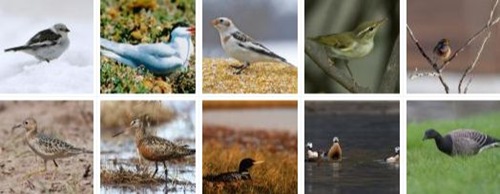
At home in a harsh region
The warmest month in the Arctic Circle still means temperatures below 50 degrees. But that doesn’t deter about 200 species of Arctic birds from making the northernmost part of the Earth their home for at least part of the year.
During the winter, ptarmigan are the most abundant birds in the Arctic, while ravens are the most noticeable birds.
In the summertime, more birds can be found throughout the region. Some nest there, staying to care for their hatchlings, while others may just fly through the Arctic on migratory routes. As the weather gets colder, the birds depart, with only a few species remaining year-round.
We asked ornithologist Dr. Nathan Senner, who studies Arctic species with the Cornell Lab of Ornithology, for his top 10 list of interesting Arctic birds. His selections include birds with long migratory flight patterns, two with flamboyant mating rituals and another with a distinctive call that differs during day and night. (Text: Roni Robbins)
Related Links:
1. Arctic tern
This small bird is a noted long-distance flier that often returns to the place it was hatched. It has the longest round-trip migration of any bird in the world, with a route that takes it from the Arctic to Antarctic waters and back each year, Senner said.
In a year, the Arctic tern may fly as many as 25,000 miles during migration. The bird may fly hundreds of thousands of miles in its lifetime, which can be as long as 34 years.
Related Links:
2. Snow bunting
If you happen to camp in the Arctic, don’t be surprised if you find a snow bunting singing from the top of your tent “as they make use of the vantage point over the surrounding tundra,” said Senner, now a post-doctoral fellow in the Netherlands. “This species is the farthest north nesting passerine, or songbird.”
The male snow bunting arrives at its Arctic breeding grounds in early April, four to six weeks before the female. At that time, the bird must protect itself from temperatures that can be as low as minus 22 degrees.
3. Arctic warbler
The Arctic warbler is an “Old World” warbler species, not closely related to the colourful wood warblers common in the eastern United States, Senner said. “They migrate each year to southeast Asia and the Philippines to join other Old World warbler species.”
The small, drab bird breeds in the willow thickets across Eurasia and into the sub-Arctic and Arctic of Alaska, the Cornell Lab of Ornithology reported.
4. Bluethroat
Hum a few notes and these handsome Arctic birds might mimic you, like a mockingbird or catbird. They also migrate back and forth between the Old and New Worlds, Senner said.
The bird is named for the male’s blue throat, which can have a white or red centre. Though colourful, the guarded bluethroat is hard to spot in dense vegetation. “It is easy to see only while it is singing or performing flight displays,” states the Cornell Lab guide.
5. Buff-breasted sandpiper
Forget your typical bachelor party. “Buff-breasted sandpipers are known as a ‘lekking’ species, which means males will group together and perform dances for on-looking females,” Senner said. “The females then choose their favourite to pair off with. The dances are quite striking and amazing to behold.”
This shorebird migrates from its Arctic breeding grounds to southern South America, according to the Cornell Lab guide.
6. Hudsonian godwit
You’d think it would need a layover, but this large shorebird is known for its nonstop flights. “We have recently documented how their migrations involve nonstop flights of over 6,000 miles,” said Senner, who specializes in this species.
The flights, which can take seven days or more, can take the Hudsonian godwit from southern Chile to the Great Plains of the U.S. in spring or from James Bay, Canada to Buenos Aires, Argentina in fall, he said.
7. Yellow-billed loon
The largest species of loon, this bird sports a light yellow bill - thus the name - with striking white spots on a black background. During the non-breeding season, it's much less noticeable because it moults to a light brown colour.
"They're eye-catchingly beautiful,” Senner said. “They are also incredible vocalists, with their songs and displays often audible for miles around."
While they're nesting in the summer, yellow-billed loons are quite vocal. Their calls can sound like laughing or yodelling during the day and like crying at night. During the winter, however, the birds don't make a lot of noise.
They mostly migrate to Asia, with recent research showing many Alaskan nesting yellow-billed loons spending the winter off the coast of Japan, Senner said.
8. Steller's eider
Another beauty and the smallest of the eider species, this sea duck is considered vulnerable by the International Union for Conservation of Nature.
The males face some stiff competition when it comes to wooing a female. As many as seven males may pursue a single female. They have an elaborate display of "courtship behaviours, including a series of head-turns, shakes and rearing out of the water," according to the Alaska Department of Fish and Game.
Aggression is shown to the other males with moves that include lifting the beak to show a patch of black underneath.
9. Brant
This Arctic-nesting goose can be seen along the Pacific coast as far south as Baja California in the winter. In the summer, they can be found in their main breeding grounds from the low Arctic to the high Arctic.
Brant often mate for life and the parents accompany their hatchlings during the young birds’ first migrations, according to Birds of North America Online.
10. Northern wheatear
Flying 2,200 miles without stopping is incredible, considering how small this species is, Senner said. That’s the distance documented by Northern wheatears nesting in eastern Canadian Arctic and migrating to Africa, he said.
The Northern wheatear crosses either the Atlantic Ocean or the continent of Eurasia to get to its wintering grounds of sub-Saharan Africa. It is the only regularly breeding songbird of North America to do so, according to the Birds of North America Online, which is a joint venture of the Cornell Lab of Ornithology and the American Ornithologists’ Union.
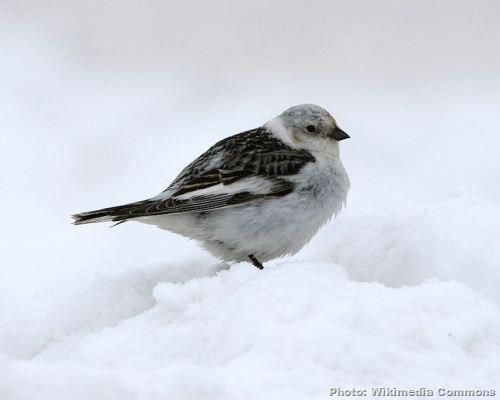

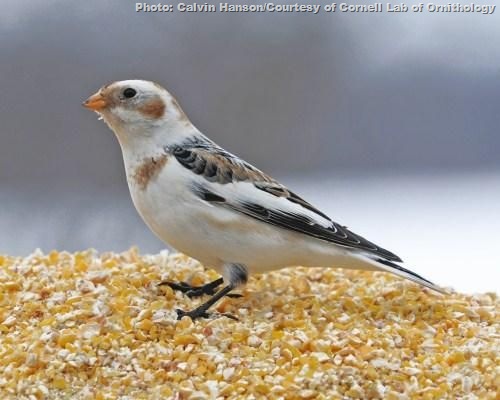
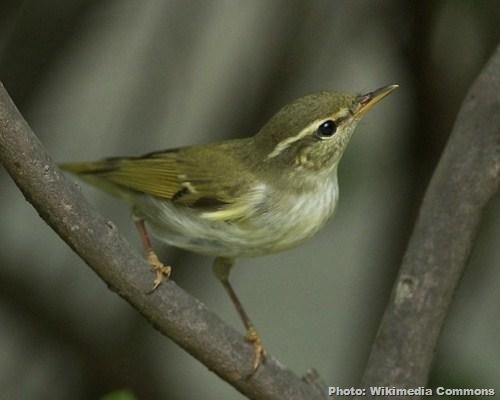
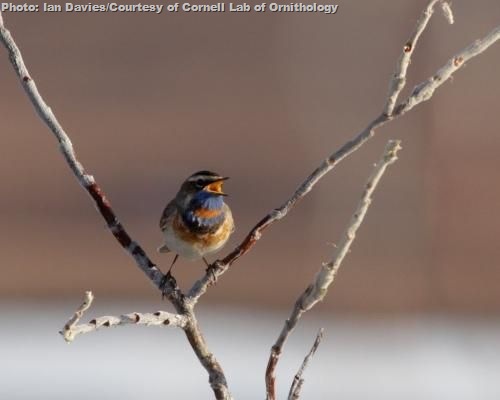
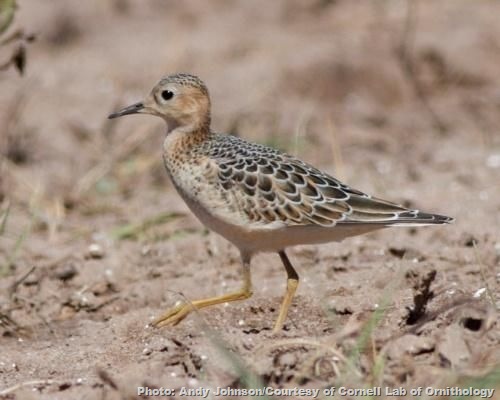
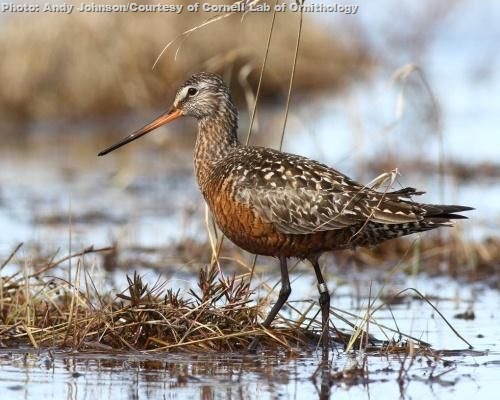
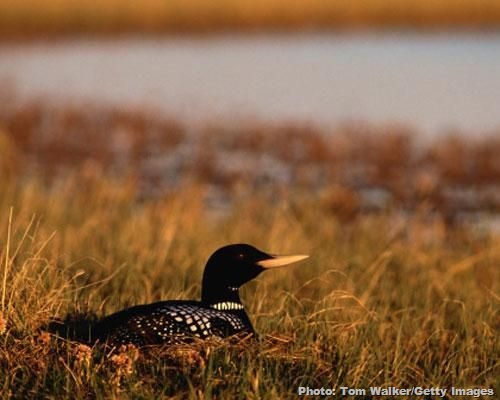

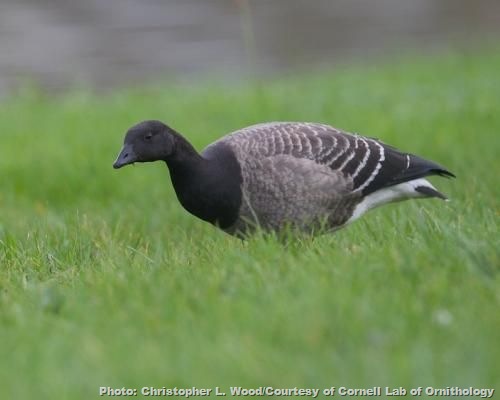

No comments:
Post a Comment
Please adhere to proper blog etiquette when posting your comments. This blog owner will exercise his absolution discretion in allowing or rejecting any comments that are deemed seditious, defamatory, libelous, racist, vulgar, insulting, and other remarks that exhibit similar characteristics. If you insist on using anonymous comments, please write your name or other IDs at the end of your message.